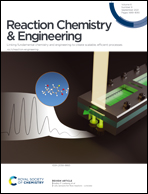Microwave desorption mechanism and microwave effect based on SO2 chemical dissociation and mass transfer of basic aluminium sulfate desulfurization rich liquid
Abstract
A microwave liquid-phase desorption technique for enhancing mass transfer with chemical dissociation has been proposed for the first time. In this paper, the static desorption system of basic aluminium sulfate (aluminium base) desulfurization rich liquid was investigated through an experiment and numerical simulation. By establishing a desorption mass transfer rate equation and the internal heat source and concentration source of microwave desorption, the mechanism of microwave desorption thermal and non-thermal effect was revealed. Results showed that desorption mass transfer rate (NSO2) is related to temperature, pressure, film thickness and liquid SO2 concentration (CSO2). Desorption temperature and gas film thickness have limited influence on desorption performance, while CSO2 and liquid film thickness have significant influence. The increase in NSO2 per unit reduction of liquid film thickness increased five times when liquid film thickness decreased from 50 to 30 and then to 10 μm. At the same film thickness, microwave thermal desorption was controlled on the basis of desorption temperature and time, and microwave power only changed the heating rate. The important value of microwave non-thermal effect was that CSO2 was greatly increased by enhancing the chemical dissociation ability of SO2. At 800 W, the NSO2, mass transfer rate chemical influence factor (Φ) and physical influence factor (ψ) of thermal desorption end point were 0.98, 0.92 and 1.07 times those at 480 W, respectively, at the same film thickness, whereas microwave desorption end point were 3.28, 3.18 and 1.03 times, respectively, those at 480 W. Furthermore, the impact ratio (X) between non-thermal and thermal effects on NSO2 of microwave desorption was between 6.3 and 15.5 at 800 W and between 2.8 and 10.6 at 480 W. High microwave power showed stronger non-thermal effect capability.



 Please wait while we load your content...
Please wait while we load your content...